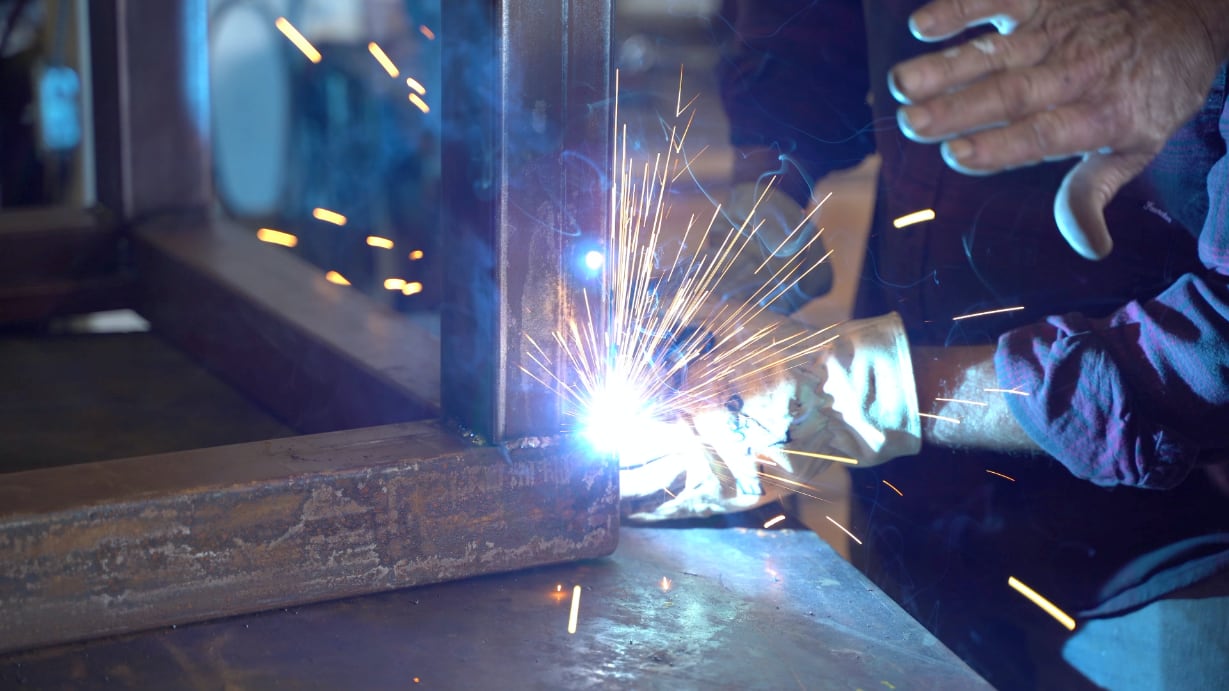Like the old saying goes, ‘Practice makes Perfect’. Welding is no exception but proper technique also plays a critical role when going for that perfect bead. Here’s 10 tips for improving your MIG welding that we’ve complied.
1. Mr. Clean
Unlike traditional stick welding where mill scale or even rust doesn’t overtly affect the joint, the process of MIG welding requires clean surfaces to avoid porosity and achieve good penetration.
Good joint preparation goes a long way towards the quality and finished appearance of your weld. Any oil, rust, dirt or other contaminants should be thoroughly removed prior to laying down your first bead. Small cracks or other imperfections in your materials should be ground out as well with an angle grinder.
2. Get Grounded
Good arcs require good electrical circuits. We want the current coming from your welding machine to use the shortest path to your earth clamp. Achieving this is a simple as choosing a location as close to the arc as possible. Grinding your clamping point to bear metal too is also recommended.
Check your clamp. It should be in good working condition. Worn parts or a loose cable connection can cause more resistance in the welding circuit which in turn can cause a voltage drop that affects weld quality.
3. This is a Stick-Out
Its amazing how much of a difference your stick-out length will make. Too much stick-out can destabilize the arc and cause excessive spatter. Too little can result in burn throughs in thinner materials.
As a rule of thumb, 1/4″ – 3/8″ of an inch generally works well for 0.024 and 0.030 inch wire. For 0.035 and 0.045 inch wire, increase your stick-out to 3/8″ – 1/2″.
Contact tip recess also plays an important role here. More recess leads to more stick-out where as reducing recess will tend to increase electrical resistance and reduce conductivity due to the increased heat build up. Keep your recess to around 1/4″ to 1/8″ unless you have a special condition that calls for a flush or extended position (a difficult joint to reach for example).
4. Positioning
Optimal hand position as well as using both hands for stabilization can make a good welder into a great one. We also want to maintain a fairly consistent angle depending on your position. Use the following as a guide-
- Flat Position Welding
Arguably the easiest type of joint to weld, we can simply hold the gun anywhere from straight down to up to 35 degrees leaning into the direction of the weld when pushing. - Horizontal Position Welding
For this position, holding the gun pointing upwards between 35 – 45 degrees works best. Also maintaining a slight tilt of 15 – 35 degrees towards the direction of the weld is recommended. - Vertical Down Welding
Similar in ease to flat welding, an angle of 35 – 45 degrees will typically yield the best results. - Vertical Up Welding
This position can be tricky but again, an angle of 35 – 45 degrees tends to be optimal. - Overhead Welding
5 to 30 degrees towards the direction of the weld is recommended for overhead joints.
5. Sound Hound
Another good tip for improving your MIG welding is to listen to the sound. If you’re not ‘frying bacon’, something is off. Your machine should be producing a nice steady buzz while welding. Hissing, crackling or other loud noises usually indicate that your voltage or amperage isn’t set correctly.
Check your settings and adjust if necessary.
6. Push or Pull
In the words of John Leisner of Miller Electric, ‘If it produces slag, you drag’. The comment not only applies to stick welding but also MIG flux-core wire welding. Otherwise for most joints, pushing is recommended unless material thickness comes into play or deep penetration is required.
7. Speed Trap
Ideally, your welding ridge and puddle should be approximately 3/8″ behind your wire electrode. Going too slow will produce a wide bead with poor penetration while also depositing too much metal. Likewise, too high a speed will produce an uneven inconsistent bead along with excessive splatter.
Maintain a consistent speed throughout your weld.
8. Check the Gas
Inadequate shielding gas can cause a number of problems with your finished joint with the most common being porosity. Always verify adequate flow at your regulator (typically 20-40 CFPH) before starting.
Replace any damaged components or hoses as even small leaks can lead to venturi effects where air gets sucked into the gas line further reducing flow.
Too much flow is also bad as the turbulence caused can also lead to porosity problems.
9. Here's a Tip
You can’t expect a good weld from a spatter clogged nozzle or mangled tip. Deformities in the tip will change your arc characteristics and usually not for the better.
Tip kits are fairly inexpensive so having a few extra on hand is highly recommended even for the occasional welder.
10. Practice makes Perfect
Putting it all together requires practice. Good joints require a decent amount of coordination that anyone can attain easily with repetition. No one achieve’s that ‘golden arm’ with just a few passes under his/her belt.
Remember that there’s a technical aspect of learning how to best operate the particular machine you’re using as well. In other words, knowing when (and what) to tweak to get your optimal weld. Again, experience is key here as you deal with different materials and tackle various welding positions to develop a ‘feel’ for how your arc is behaving.
Finally like any great chef, you need to examine and scrutinize your final product. ‘Reading the bead‘ can give you volumes of information on what went wrong and what went right so you can apply it to the next joint, and the next and the next.
